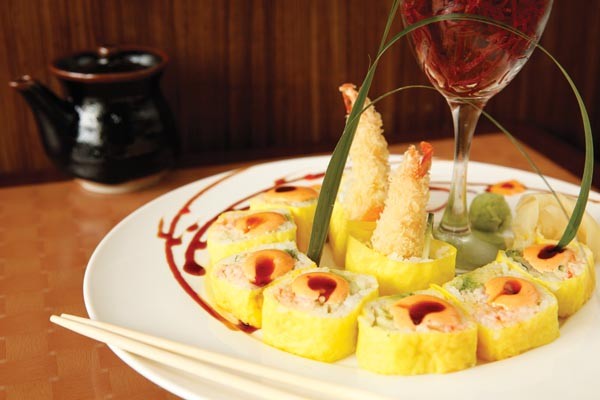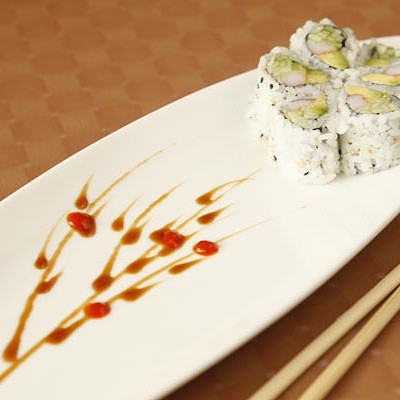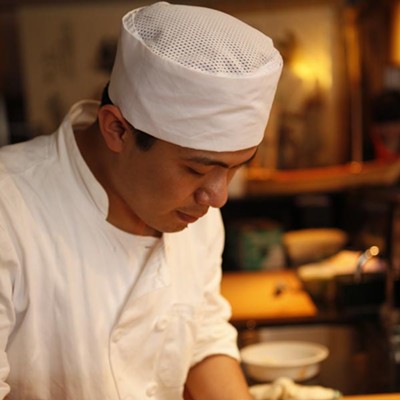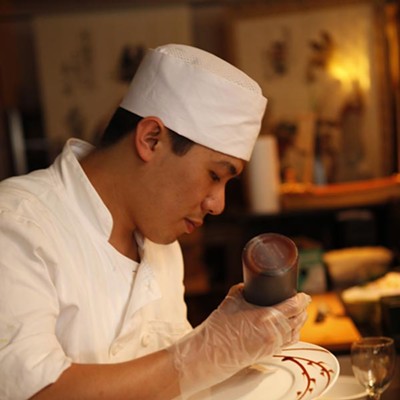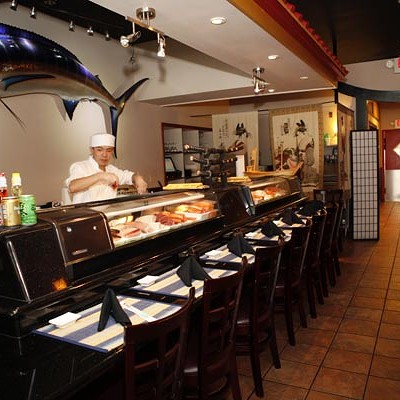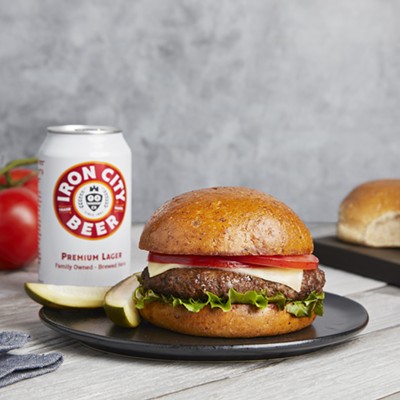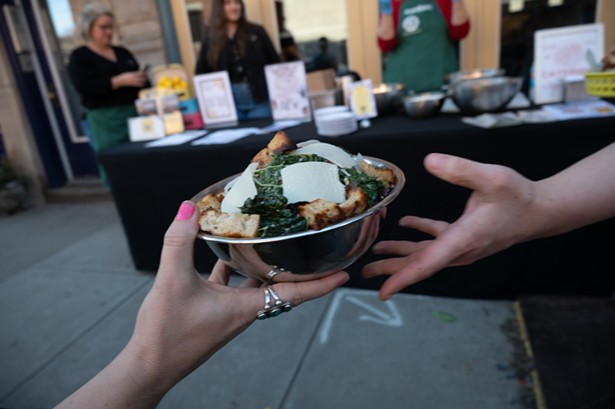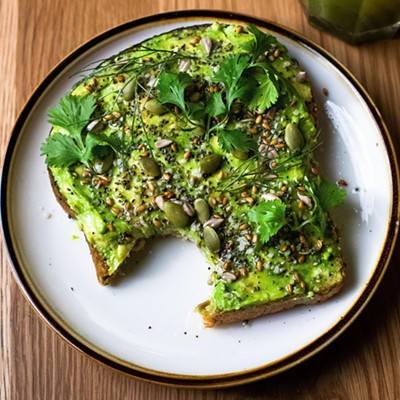We'd never been to Beaver until recently, but the day that we spent in the town convinced us that it is one of the most criminally overlooked spots in our region. Despite its location where the Beaver River empties into the Ohio, it was never an industrial center, and its status as a county seat has ensured two centuries of modest but consistent prosperity. Such good fortune has bestowed Beaver with beautiful neighborhoods, green parks and sweeping river views, all within walking distance of an old-fashioned main street, complete with grocery, hardware, and toy stores, plus several restaurants, sandwich counters, pizza places, an ice-cream shop and a café.
And though the café may be one of a ubiquitous chain, the other dining spots are local businesses, among them a Japanese restaurant called Yama. (Yama means "mountain" in Japanese and is a popular name for Japanese restaurants; this Yama is unrelated to the restaurant of the same name in Seven Fields, which we wrote about last year.)
On a warm spring evening, we were drawn by the promise of cool sushi at Yama, a restaurant that would stand out anywhere in the region for its artistic approach to classic Japanese cuisine. Yama did not surprise us with dishes we've never seen before; the sizable menu was packed with familiar favorites such as tempura and teriyaki. Instead, Yama impressed us with top-notch preparations and presentations befitting the land of flower-arranging, bonsai and raked rock gardens. Yama also incorporated a Japanese approach to American dining customs with extraordinary success.
The salad list, for example, is something we usually pass over at Japanese restaurants; the custom of tossing various tasty tidbits with a pile of freshly picked leaves is a Western one, without a true indigenous analog in Japan. But because Americans have such a strong allegiance to eating salads, Yama has developed a number of Japanese-inspired ones which tasted even better than their menu descriptions made them sound. Octopus salad, for example, was beautifully presented in a small glass tumbler. In it, tender tentacles, delicate cucumber matchsticks and grated daikon radish threads seemed to rise out of a pool of ponzu (a citrusy soy sauce).
The Yama salad would have made a wonderful light entree. Plenty of spring greens were tossed with strips of assorted sashimi, masago (roe), a bit of seaweed and "Yama sauce." a dressing whose creamy richness was offset by some gingery zing. The salad was garnished with magenta threads of finely grated beet, a touch which added not only visual appeal but just enough sweet vegetal flavor and crisp texture to enliven the dish.
Similarly, an order of pan-fried gyoza dumplings was garnished with a small tumbleweed of finely grated carrot. All too often a throwaway garnish, the carrot in this dish added subtle notes of brightness to the savory dumplings. The menu said the gyoza were pork, but they were much lighter and more tender than most Asian pork dumplings, and quite enjoyable.
In ordering sushi, we usually tend toward traditional nigiri and simple rolls; the baroque exuberance of most specialty rolls seems to stray too far from the succulent balance that's the hallmark of the very best sushi. But two specialty rolls at Yama were standouts — one in its simplicity, the other in well-balanced profusion. One roll, consisting simply of slices of tempura-ed sweet potato wrapped in rice and nori seaweed sheets, offered sweetness, earthiness and a salutary touch of saltiness. The crispy resistance from the fried tempura batter gave each morsel a wonderful texture. The Beaver roll, a creation of Yama's sushi chef, played sweetly mild crabmeat against creamy, tangy, slightly spicy mayo and the saline pop of tobiko — tiny fish roe — to supremely satisfying effect.
Hot entrees are often the downfall of American Japanese restaurants, dumbed down for sushi-shy patrons, and frequently bearing little resemblance to the authentic hot dishes of Japan. Soba noodle soup with seafood, unfortunately, met these expectations. Incredibly hot broth caused the salmon, bay scallop, shrimp and fish cake to overcook long before the soup was cool enough to taste. The broth was also a bit bland, and with the fish not at its best, this didn't leave much to carry the dish.
The chef at the stove was vindicated, however, by the pork katsu don, fried pork cutlet served on a bowl of rice and topped with a fried egg. Thick katsu sauce — normally it's drizzled over this dish — was not in evidence, but the rice was nonetheless distinctly flavored, possibly thanks to shredded greens that had been cooked in seasoning, then added in. While the end result was humble, it was also successful — a tasty meal in a bowl.
Good Japanese restaurants in our area are few and far between; for excellent sushi and Japan-inspired salads, it's worth bridging the gap to visit Yama in Beaver.

